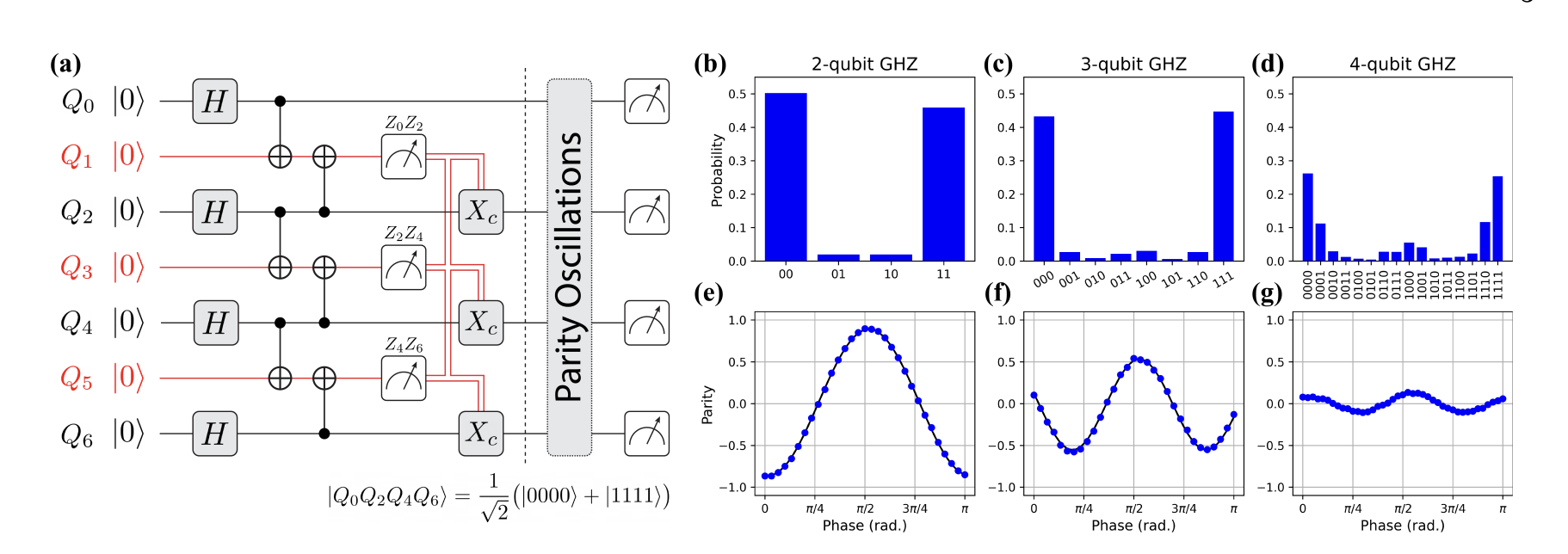Quantum entanglement, a unique feature of quantum computers, can be generated in two ways: gate-based and teleportation-based quantum computing. The former requires circuit depths that grow with the number of entangled qubits, while the latter can generate entangled states with a constant circuit depth.
Quantum teleportation, a method for transmitting a quantum state from one qubit to another, requires mid-circuit measurements and fast classical feedforward operations. In the noisy intermediate-scale quantum (NISQ) era, qubit coherence times and gate fidelities limit the circuit depth for useful computations. However, teleportation-based protocols can prepare nonlocal multipartite entangled states in constant depth, improving quantum computing efficiency.
What is Quantum Entanglement and How Does it Differ from Classical Computing?
Quantum entanglement is a unique feature that sets quantum computers apart from classical computers. In gate-based quantum computing, the creation of entangled states or the distribution of entanglement across a quantum processor often requires circuit depths which grow with the number of entangled qubits. However, in teleportation-based quantum computing, one can deterministically generate entangled states with a circuit depth that is constant in the number of qubits, provided that one has access to an entangled resource state, the ability to perform mid-circuit measurements, and can rapidly transmit classical information.
In gate-based quantum computing, entanglement is generated by multi-qubit unitary operations, i.e., gates, which can be used to prepare multipartite entangled states. In systems with all-to-all connectivity, generating multipartite entanglement can be trivially accomplished by means of two-qubit gates. However, in systems with limited connectivity, such as superconducting circuits, generating nonlocal multipartite entanglement by unitary operators can be costly due to the need for SWAP networks for swapping states between neighboring qubits.
How Does Quantum Teleportation Work?
Quantum teleportation is a method for transmitting a quantum state from one qubit to another, provided that they each share half of a Bell state and can transmit classical information. When embedded within a larger unitary quantum circuit for performing adaptive control of entangled states, teleportation protocols necessitate the use of mid-circuit measurements (MCMs) and fast classical feedforward operations conditioned on the results of the measured outcomes.
Using adaptive circuits, it has been shown that no purely unitary circuit can prepare the same entangled state for the same circuit depth and connectivity. Moreover, these adaptive circuits have been proposed for simulating exotic phases of matter with non-Abelian anyons, long-range interacting quantum matter, and for preparing topologically ordered states.
What are the Limitations of Quantum Computing in the NISQ Era?
In the noisy intermediate-scale quantum (NISQ) era, qubit coherence times and gate fidelities limit the circuit depth with which we can perform useful computations. For superconducting qubits, if long-range entanglement is needed between qubits which are not physically connected, swapping information requires O(n) circuit depth for n qubits. Therefore, generating multipartite entanglement between nonlocal qubits becomes intractable if the available size of contemporary systems grows faster than the fidelity of multi-qubit gates can be improved.
How Can Teleportation-Based Protocols Improve Quantum Computing?
However, it has been shown that nonlocal multipartite entangled states can be prepared in constant depth using teleportation-based protocols as long as one has access to mid-circuit measurements and adaptive feedback. These entangled states can further be used as a resource for other teleportation-based protocols, such as generating nonlocal entangling gates.
In this work, the researchers utilized open-source FPGA-based control hardware with low feedback latency for exploring the utility of teleportation-based protocols on an eight-qubit superconducting quantum processor. They first demonstrated well-known procedures for preparing Greenberger-Horne-Zeilinger (GHZ) states and implementing nonlocal teleportation-based CNOT gates in constant depth.
What are the Findings and Implications of this Research?
Then, the researchers showed how one can utilize both protocols to implement an unbounded fanout gate in constant depth, which they used to create a controlled NOT-NOT gate between three unconnected qubits. Finally, they showed how one can deterministically teleport quantum states or generate Bell pairs between distant qubits in constant depth and demonstrated these protocols between qubits on opposite sides of their quantum processor.
Throughout this work, the researchers explored the extent to which MCMs dephase idling spectator qubits and found that the measurement-induced dephasing strongly depends on the spectral resolution of the readout resonators coupled to each qubit. This work serves as a useful study for understanding how quantum entanglement and teleportation-based protocols can be utilized to improve the efficiency and capabilities of quantum computing.
Publication details: “Efficient Generation of Multi-partite Entanglement between Non-local
Superconducting Qubits using Classical Feedback”
Publication Date: 2024-03-27
Authors: Akel Hashim, Ming Yuan, Pranav Gokhale, Larry Chen, et al.
Source: arXiv (Cornell University)
DOI: https://doi.org/10.48550/arxiv.2403.18768

